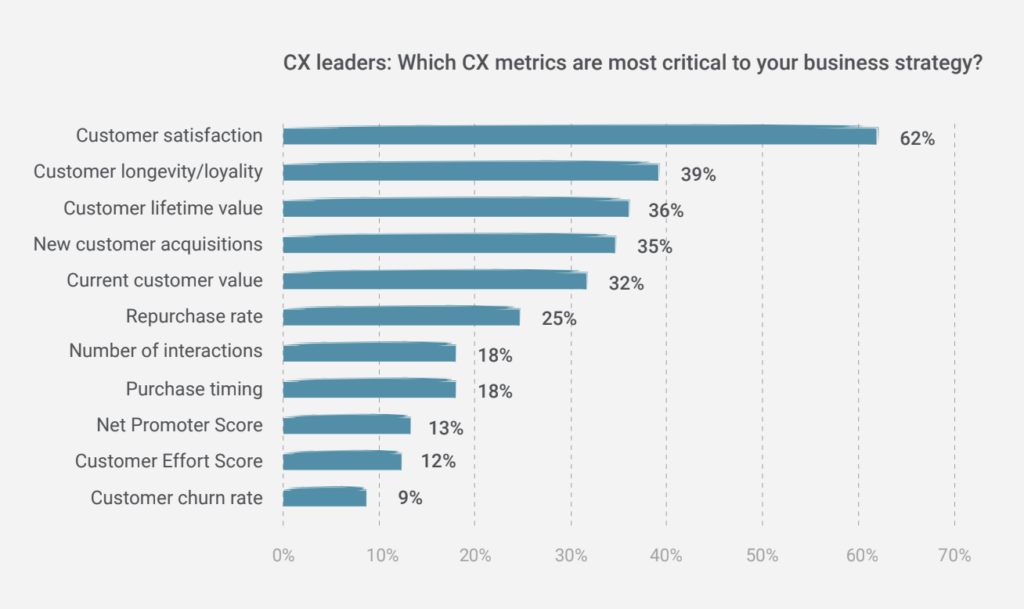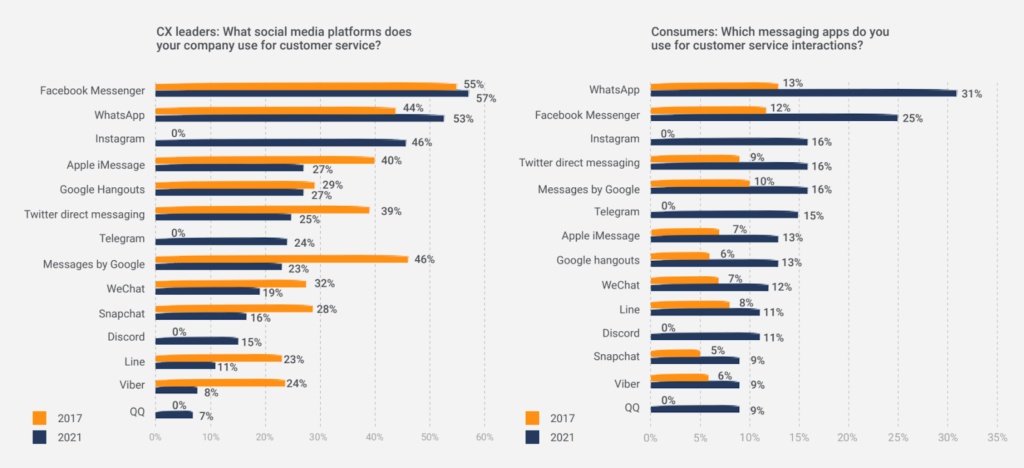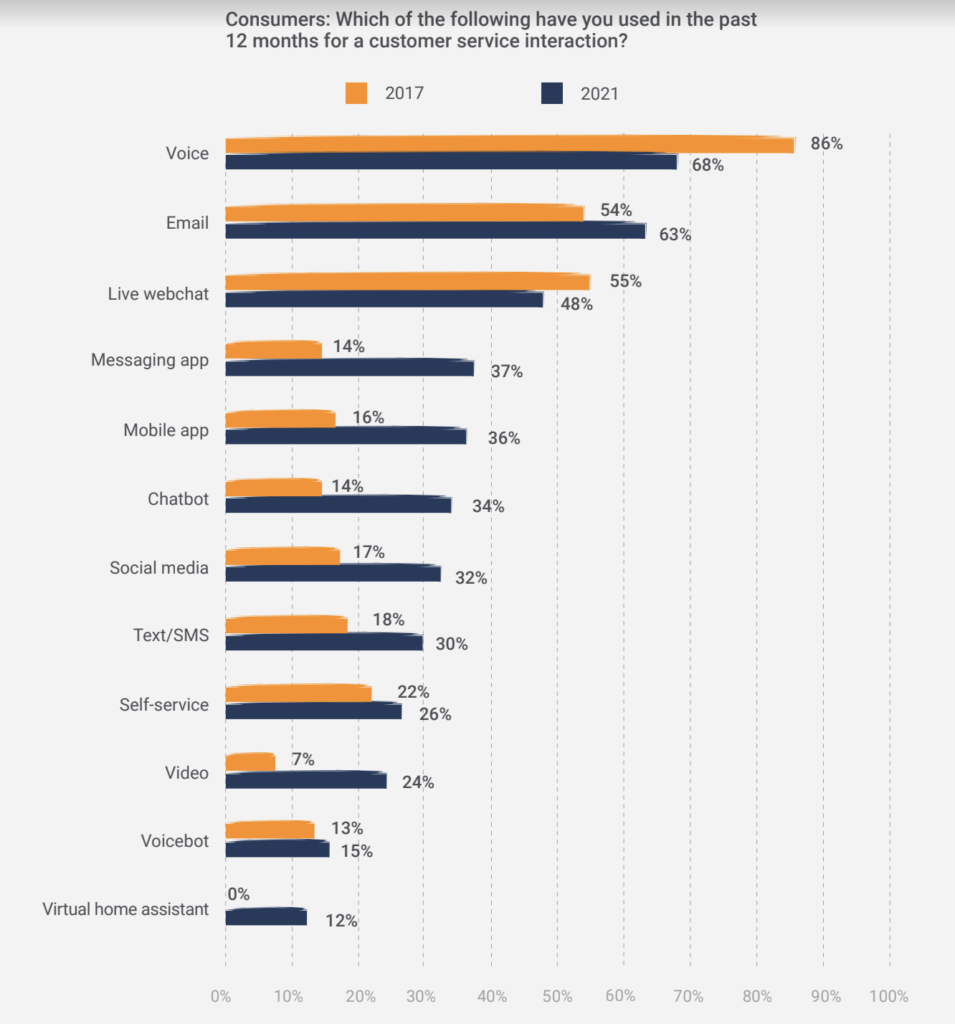The future of Cx communication is in customers’ hands
Businesses traditionally have dictated when and how customers could communicate with them. Designated service hours were set, and only specific methods were available for customers to contact businesses. Initially, that meant in-person visits, telephone calls and, as technology expanded, email took hold.
As technology continued to evolve with texting, messaging apps and chatbots available 24/7, communication control began to tip toward customer preferences. Today, it is the customer who dictates when and how they communicate with businesses. Businesses that haven’t yet adapted to this change must adapt soon if they are to attract and retain customers.
Companies are prioritizing customer service
Customer service (CX) has always been important. In the Digital Age, it’s even more critical because customers can easily – and even virally – share dissatisfaction online. Competitors are only a click away. In response, companies investing in CX. Genesys indicates that 50 percent of CX leaders increased their CX budgets by up to 50 percent and 21 percent increased it by more than 50 percent from 2020 to 2021.
Genesys’ research also found that 58 percent of CX teams report to the executive board, demonstrating how important customer service is to top-level leadership in organizations. With customer satisfaction ranked as the top CX metric, companies are increasingly prioritizing the customer experience within their comprehensive business strategy to drive customer longevity and loyalty.

Source: Genesys 2021 State of Custome Experience Report
Twilio leaders are seeing the same trends in their organization, noting that personalization is more important than ever to customers. Nearly half (49 percent) of consumers say they will likely become repeat buyers after a personalized shopping experience with a retailer, yet only 47 percent of companies personalize communications based on real-time customer behavior.
“The future is omnichannel, personalized and hyperconnected, meaning anytime, anywhere communications using channels that customers prefer,” says Surachita Bose, industry product marketing lead at Twilio. “These preferences vary across generations, geographics, industries and use cases. Twilio’s goal is to offer what our customers want, where and when they want it.”
David Liddicoat, VP of workplace experience and people operations at Genesys, agrees. “Today, consumers expect personalized, seamless experiences across all the channels they use now.”
Preferred communication channels are changing
While preferences have been gradually changing over time as new technology is introduced, the COVID-19 pandemic significantly and quickly impacted how companies communicate with customers—including what technologies are leveraged to communicate with them.
Data from Hubtype indicates that messaging apps, such as WhatsApp or Meta Messenger, could be the top communication channels in 2023 and beyond. Previously ranked as the fifth most used channel by Forrester before the pandemic, messaging apps are now ranked as the second most leveraged channel for customer service. More and more, customers want to be able to quickly chat, write or text companies to get support or find a solution themselves. In fact, 81 percent of consumers want more self-service options.
Genesys’ 2021 State of Custome Experience Report shares similar findings, noting consumers’ use of digital communications methods, such as chatbots, social media and mobile apps, has more than doubled since 2017. Chatbots are being leveraged more and more to help provide an option to begin a self-service interaction as well as gather more information to understand customer intent and sentiment.

Source: Genesys 2021 State of Custome Experience Report
Data also shows that customers don’t want to pick up the phone to call support if they can avoid it. Forrester reported that telephone support saw the largest decline. Only in-person assistance declined more during the pandemic.
“In my year of being a customer success manner in a SaaS organization, I’ve never had to pick up the phone to call someone,” says Kat John, customer service manager at The Juice, a High Alpha Studio company. “The primary technologies I use are Zoom for monthly consultation and strategy calls and Loom for sending asynchronous videos for check-ins or answering customer questions within the product. In some cases, we have Slack channels with our customers to have on-demand access to our team.”
While the phone isn’t preferred for most issues, there is still a need for voice communications in certain situations.
“While the traditional telephone may eventually go by the wayside as digital channels continue to proliferate, the need for voice technology that allows people to talk with customer service representations will remain,” says Liddicoat. “Our research consistently tells us that when people have needs that are complex or emotionally involved, they just want human-to-human connection.”
The communication channels of the future
Customers want self-service options, to communicate on channels they’re already using and the ability to multi-task while speaking with a customer service representative. In the future, we can expect more guided chatbots, fewer phone calls, experiences in the metaverse and customer service interactions on messaging apps like WhatsApp or via text.

Source: Genesys 2021 State of Custome Experience Report
Gartner defines the metaverse as “a collective virtual shared space, created by the convergence of virtually enhanced physical and digital reality.” Within four years, Gartner predicts that 25 percent of the population will spend, at minimum, one hour a day in the metaverse.
So, if you’re not planning for the future, you’re already behind.
“Similar to text, social media and messaging apps, the metaverse will likely become a new customer engagement channel that businesses should begin considering today,” says Liddicoat. “The next challenge for businesses is to provide a consistent, connected experience for their customers as they move between the physical and digital realm, whether in store, mobile app, online or in the metaverse.”
Regardless of the channel, creating brand loyalty and customer satisfaction will increasingly rely on making the customer experience more seamless and meeting customers where they are and want to be.
Liddicoat sums it up well. “To foster loyalty in a world where competitors are a click away, businesses must create people-centered experiences by effortlessly and consistently connecting customers’ entire journeys as they move from channel to channel, so they feel seen, underwood and cared for on their terms.”






